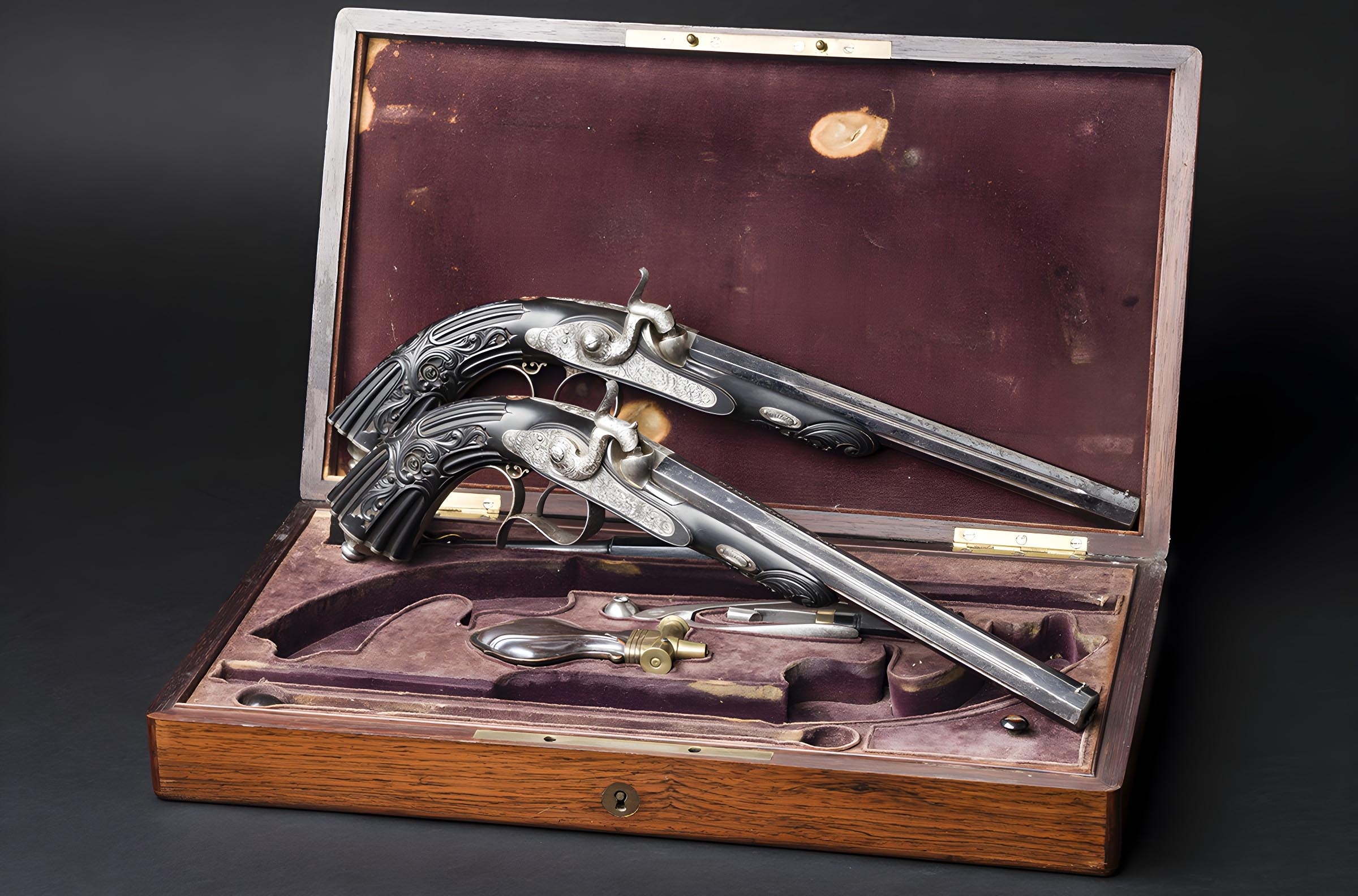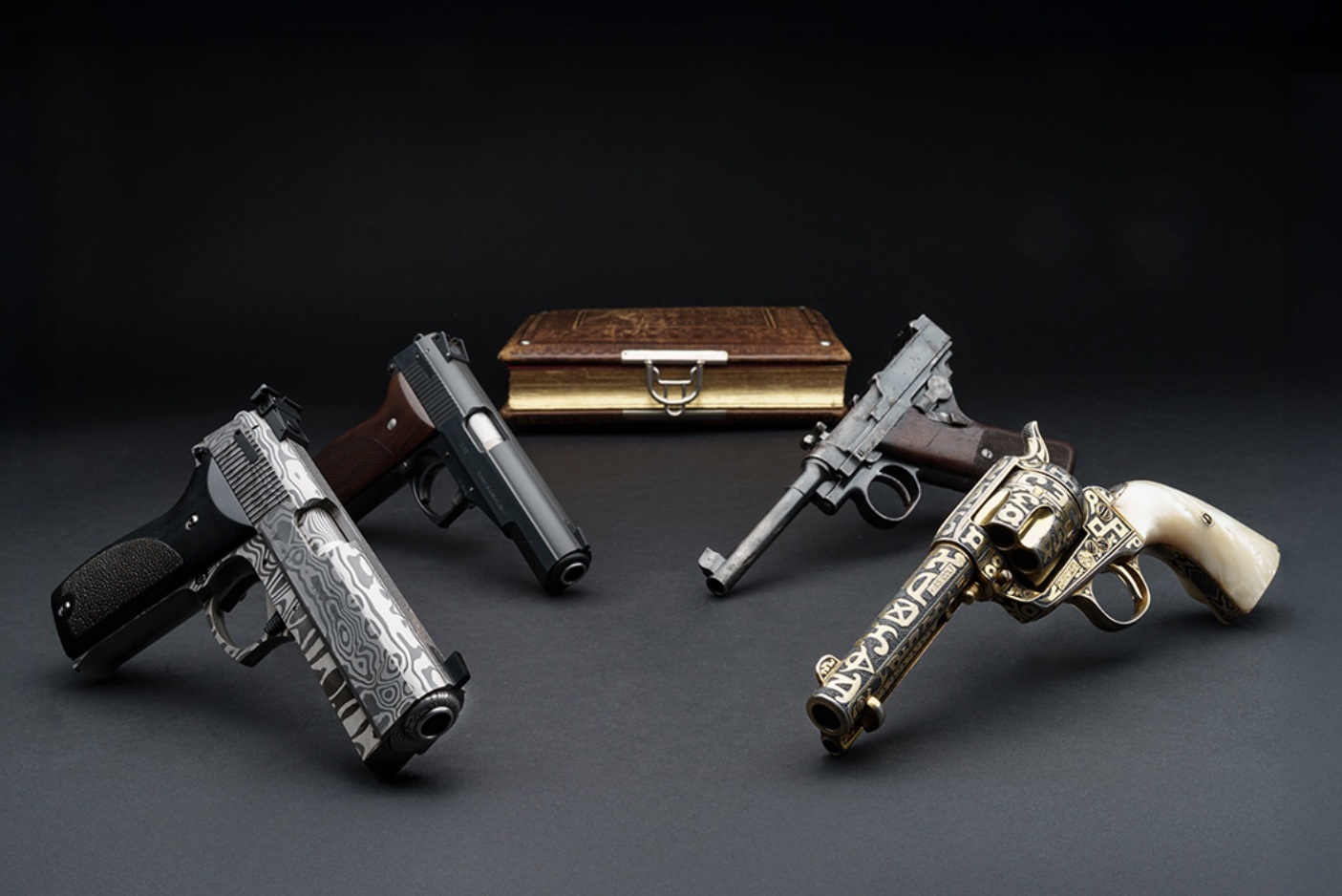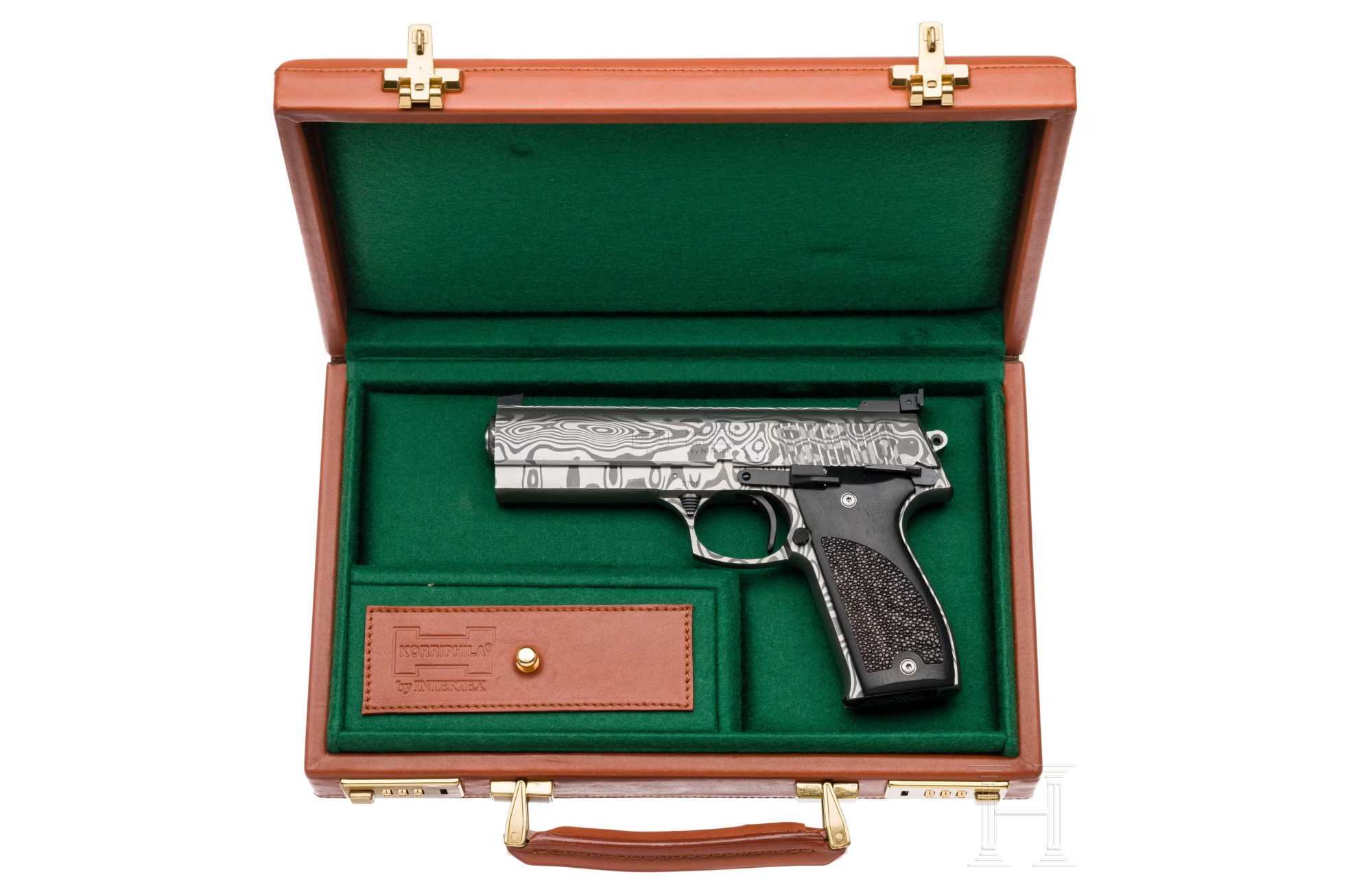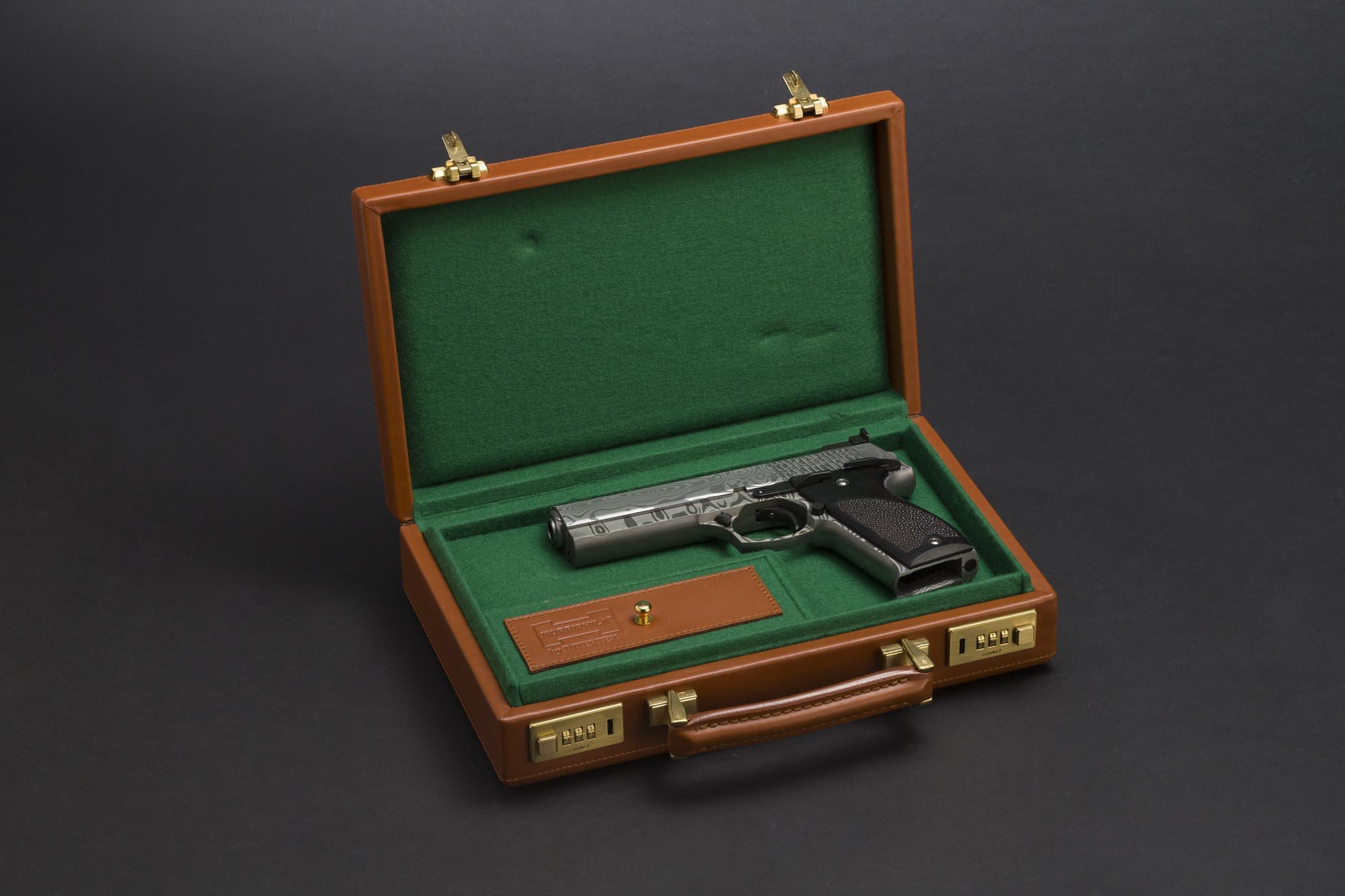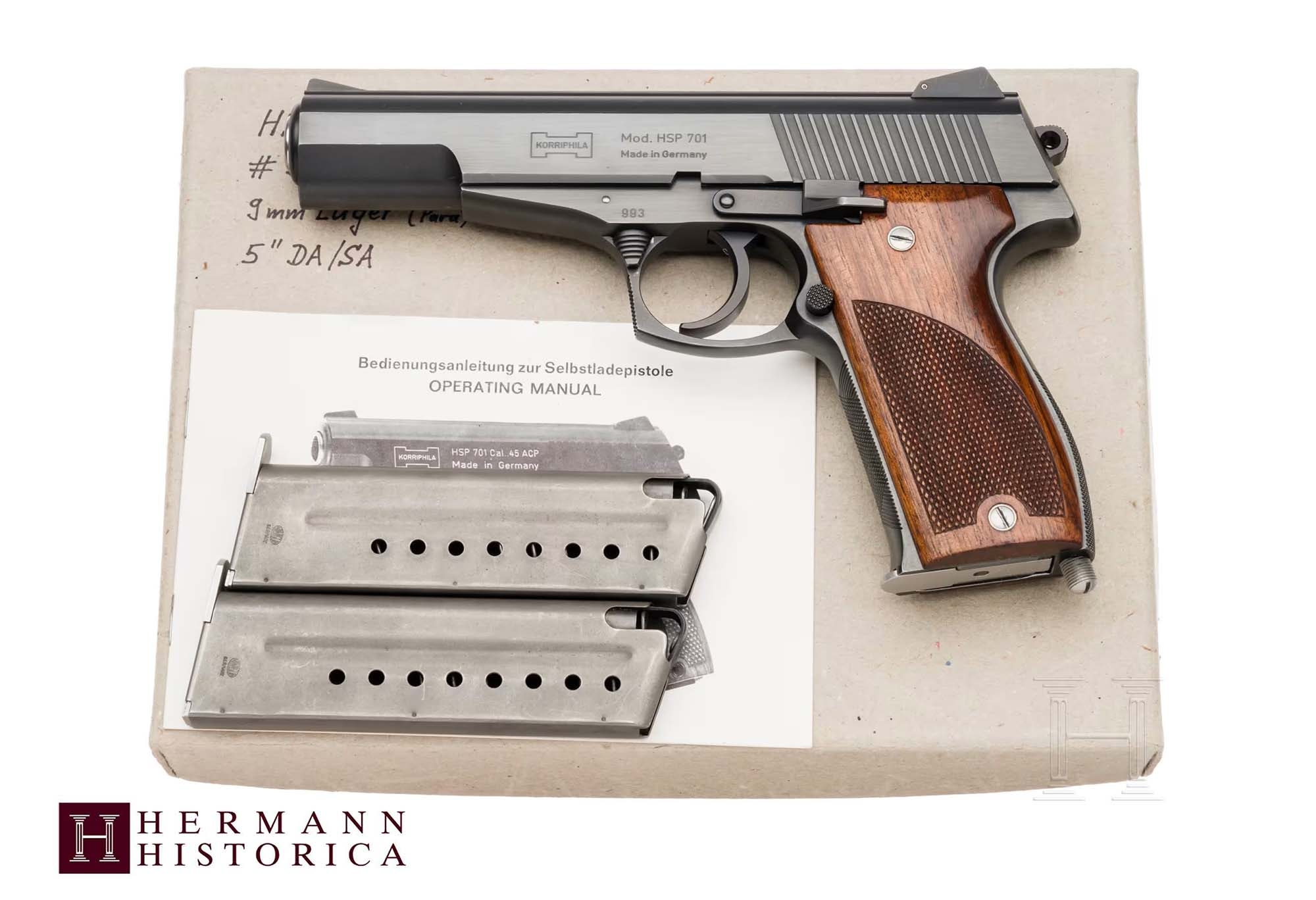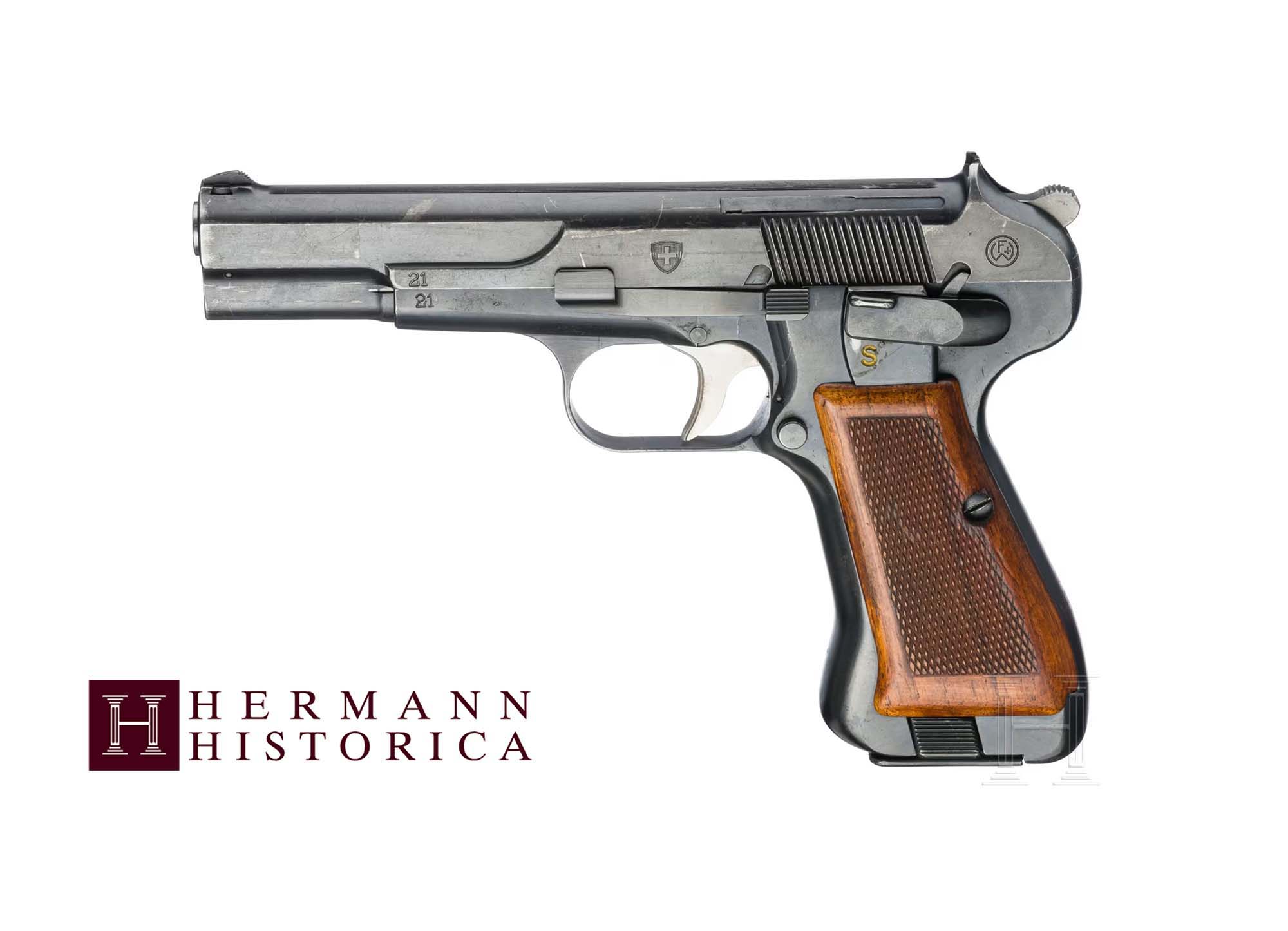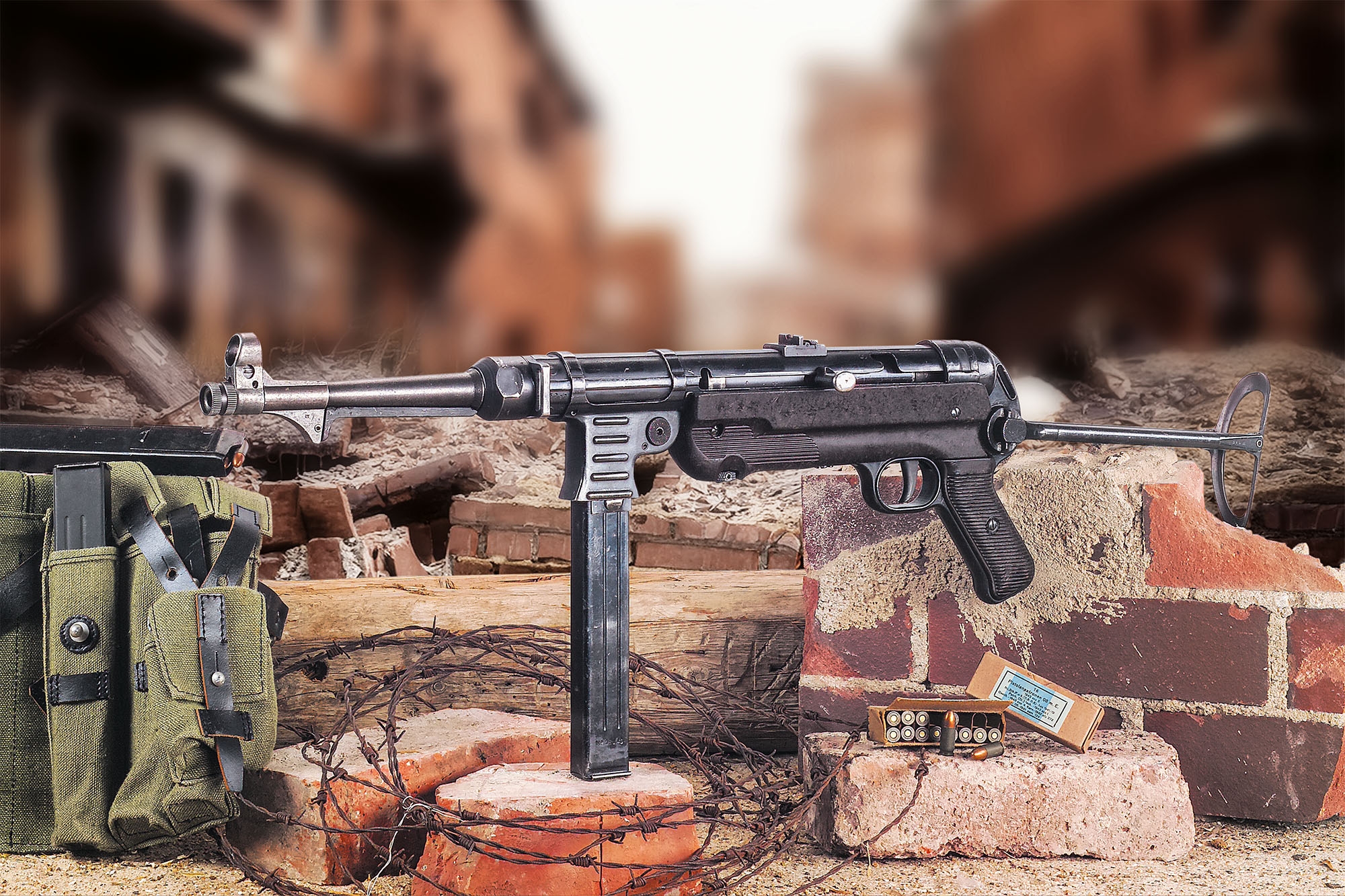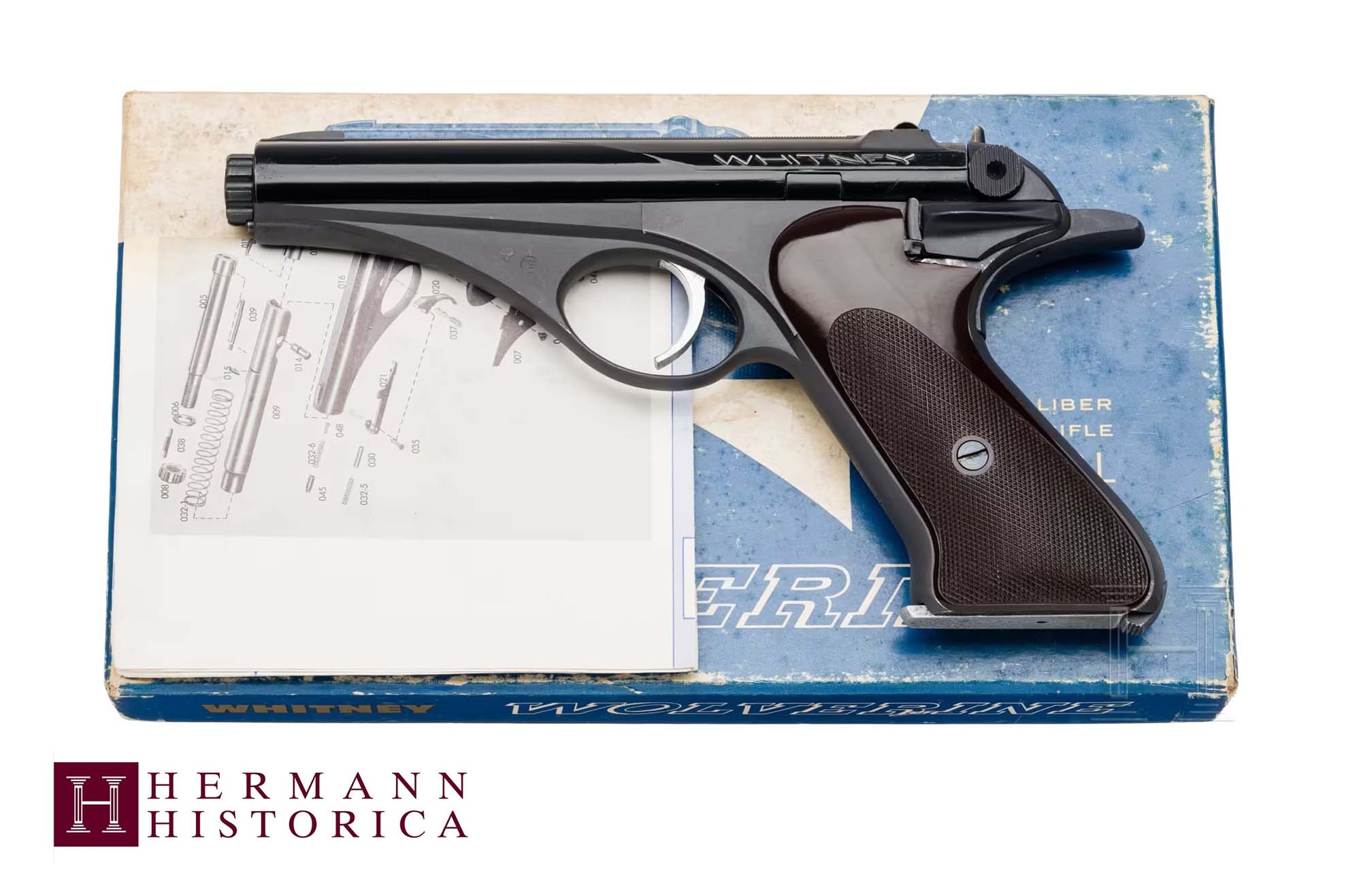With the slogan "100th Auction – 100 sell-out triumphs", Hermann Historica opens its doors for a huge celebratory sale! Given the abundance of rare objects, the selection of exquisite collectors' items and the quality of the individual artworks in its catalogue, the tagline is more than apt.
This round of sales is taking place over two weeks. This time, however, the military history collectibles and the second part of the acclaimed Dave Delich collection, which includes in particular German and Italian uniforms from the Second World War, are heading the parade of lots. The chapters of art and antiques, firearms, arms and armor will be coming under the hammer a week later, from May 14 to16. Buyers can place their bids in person in the saleroom, especially set up for the purpose, on the telephone or via one of the up to five bidding platforms.
Five centuries of antique and modern firearms
Almost 1,200 lots will change hands on May 15 from 9am (lots 1001 to 1945), and on May 16 from 10am (lots 1946 to 2119). The first day is dedicated to modern firearms. The second day is reserved for antique firearms.
Lot number 1358 is guaranteed to make collectors' hearts skip a beat. It is an extremely rare Laumann repeating pistol, chambered in 8mm Schönberger caliber and numbered with serial number 29. You can see its photo at the opening of this article. The rarity and importance of this piece is due to the fact that it is the first semi-automatic pistol ever patented (in Austria in 1892) and its design seems to be attributable to Joseph Laumann alone. Probably the Schönberger brothers, whose name is associated with the gun, merely financed the project. It is considered a collectors' "Holy Grail" and very few examples are known to exist. Described in detail and illustrated in the book The Origins of the Automatic Pistol by Joschi Schuy, this rarity will be offered for sale with an auction base of 15,000 euros. In 2021, a similar example was sold by Hermann Historica for an impressive 27,500 euros.

Lot 1821 is a Mauser G41 semi-automatic rifle, an unsuccessful military weapon that is highly coveted by enthusiasts of historical and service weapons. It is the predecessor model to the G43 semi-automatic rifle, which was mass-produced and issued to the German army in the final years of the Second World War. Only 15,000 examples of the Mauser G41 (according to other sources, a few thousand fewer) were manufactured between 1941 and 1942, but they failed the army adoptions tests due to poor reliability. Production was therefore discontinued in 1942. This example, chambered in 8x57JS caliber, has serial number 9959. With a starting price of 9,200 euros, this piece in excellent condition (only the cleaning rod is missing) can fulfill the dream of the collector who will make the highest bid.

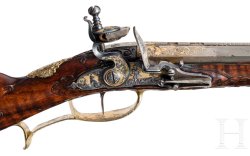
For a long time, hunting was a privilege of the nobility and a very important social occasion. For this reason, every castle or manor lord had an armory from which his hunting guests could borrow a firerarm to take part in the hunt. This was certainly true of the Schwarzenberg princes, one of the most important families of the Austrian aristocracy who produced a large number of influential politicians at the Viennese court. This magnificent flintlock rifle (lot 1998) was made around 1740 by the gunsmith Leopold Becher and, in addition to bearing the coat of arms of the princes of Schwarzenberg, it is accompanied by a beautiful hunting hanger featuring a stag horn handle, brass guard and blade fullers on both sides. The hanger can be attached to the rifle thanks to a locking mechanism and is accompanied by the original black leather scabbard with gilt and engraved brass mounts. The octagonal section barrel is rifled, in 15-millimeter caliber and supports the folding rear sight and dovetail-mounted front sight. Lock, hammer and the initial section of the barrel are decorated with gold-inlaid engravings. The original stock is made of walnut, with only a few small traces of woodworm. The gunsmith Leopold Becher was active in Karlsbad (Bohemia) from about 1725 to 1750. We do not know whether the wealthy owner ever lent this masterpiece to one of his guests, but it will probably change hands for good at auction number one hundred. The starting price is 12,000 euro.
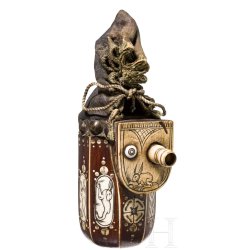
Another highlight is lot 2089, a fine powder flask with an octagonal walnut body decorated with fine bone inlays, from Silesia and dating from 1650. The spout for dispensing the powder is also made of bone, decorated with carvings. This magnificent type of flask was only made for a short time and was related to the luxury small-caliber wheellock guns. It combines the highest level of craftsmanship with unparalleled practicality. The leather shot pouch with a braid border attached to the flask body contained the lead balls. The starting price for this luxurious accessory starts at 5,000 euros.
With the spectacular Lot 1099, we move from the Renaissance to the Wild West. This is a Smith & Wesson revolver in .320 Long caliber with a six-shot cylinder and a barrel length of 20 inches, or 508 millimeters. The revolver has serial number 254 and the company letter that comes with it shows that the gun was delivered on July 9, 1880, to M.W. Robinson in New York, one of the oldest distributors of Smith & Wesson firearms. The revolver has a folding rear sight and a dovetailed front sight. The grips are checkered hard rubber, but the highlight is the removable walnut shoulder stock, which allowed this long revolver to be converted into a handy rifle. Underneath the barrel is a forend that allowed it to be fired with the support hand at a sufficient distance from the cylinder to avoid burns from the venteded gases. About 40% original finish, all surfaces show signs of handling and wear. However, this is a piece in good condition and of considerable rarity, which has a starting price of 5,200 euros.
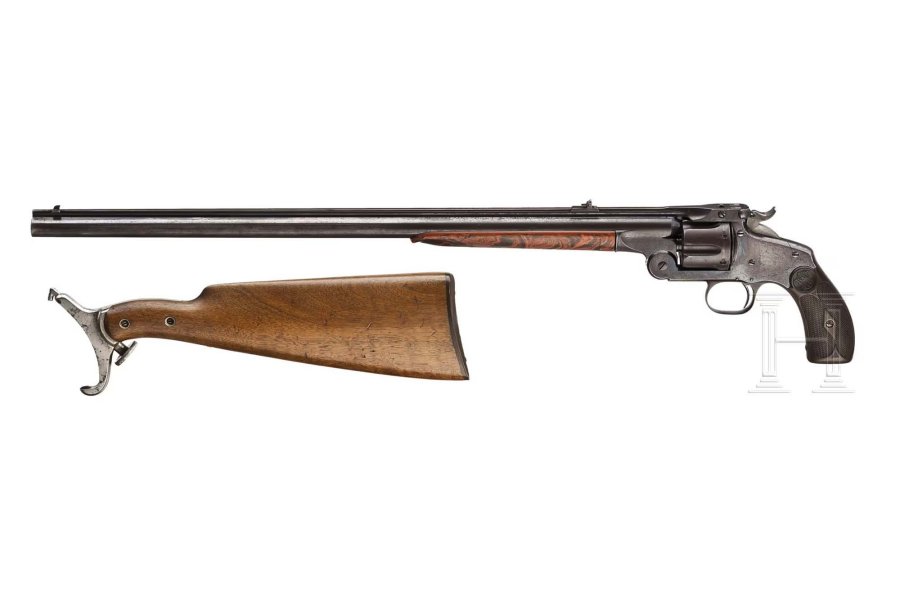
To conclude, we are back to military-derived weapons with lot 1096, a truly unusual piece: this is a SIG-AMT 510 semi-automatic rifle in .308 Winchester with serial number 16574, a 55-cm long barrel with muzzle brake and a 5-round single-stack magazine. It is a special version of the SIG 510 (also known as Stgw 57) intended for the U.S. civilian market, and the designation AMT in fact stands for "American Match Target". The stock is made of select walnut wood, the pistol grips are plastic. The rifle is fitted with an original bipod and has a "SIG / Made in Switzerland" marking. The original finish is 99%. The starting price for this truly unusual firearm is 4,800 euro. The next lot, namely 1097 is another SIG-AMT 510 unfortunately without muzzle brake and magazine, and the starting price is slightly lower, 4,000 euros.
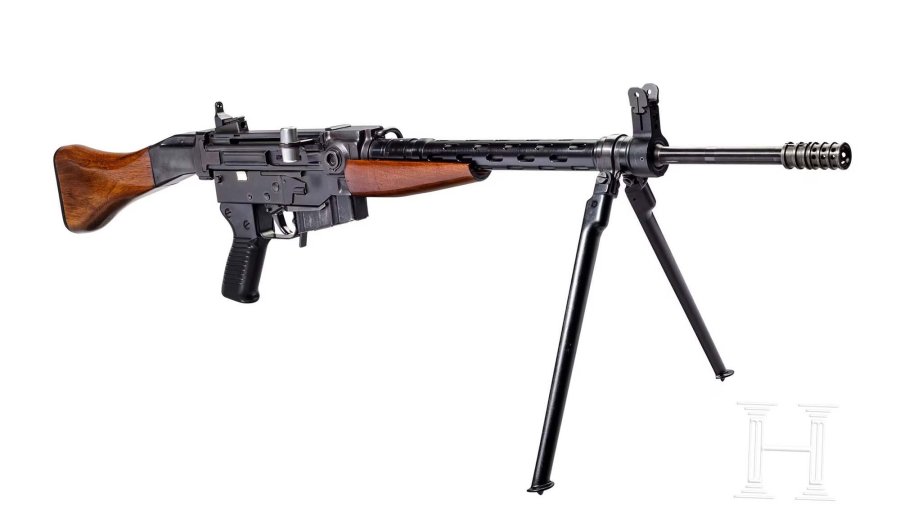
More about the 100th auction at Hermann Historica: further lots in the online auction catalog and info on participation
It would take too much space to list all the most interesting pieces, and we would deprive our readers of the enjoyment of discovering so many other antique and modern dream firearms, so we will stop here and invite you to continue your treasure hunt on the Hermann Historica website, which also offers information on the various bidding and payment methods. There you will also find the online auction catalog.
For those who prefer to see for themselves, all items and firearms for sale can be seen in person at the auction house in Grasbrunn, near Munich, Germany. The pre-sale view will take place on May 3, 4 and 6, 2024, in the auction rooms at Bretonischer Ring 3 in 85630 Grasbrunn/Munich, from 11am to 5pm. An appointmen for viewing firearms is required.
You can find out how to take part in the auctions on the Hermann Historica website. Among other things, you can bid live online.



